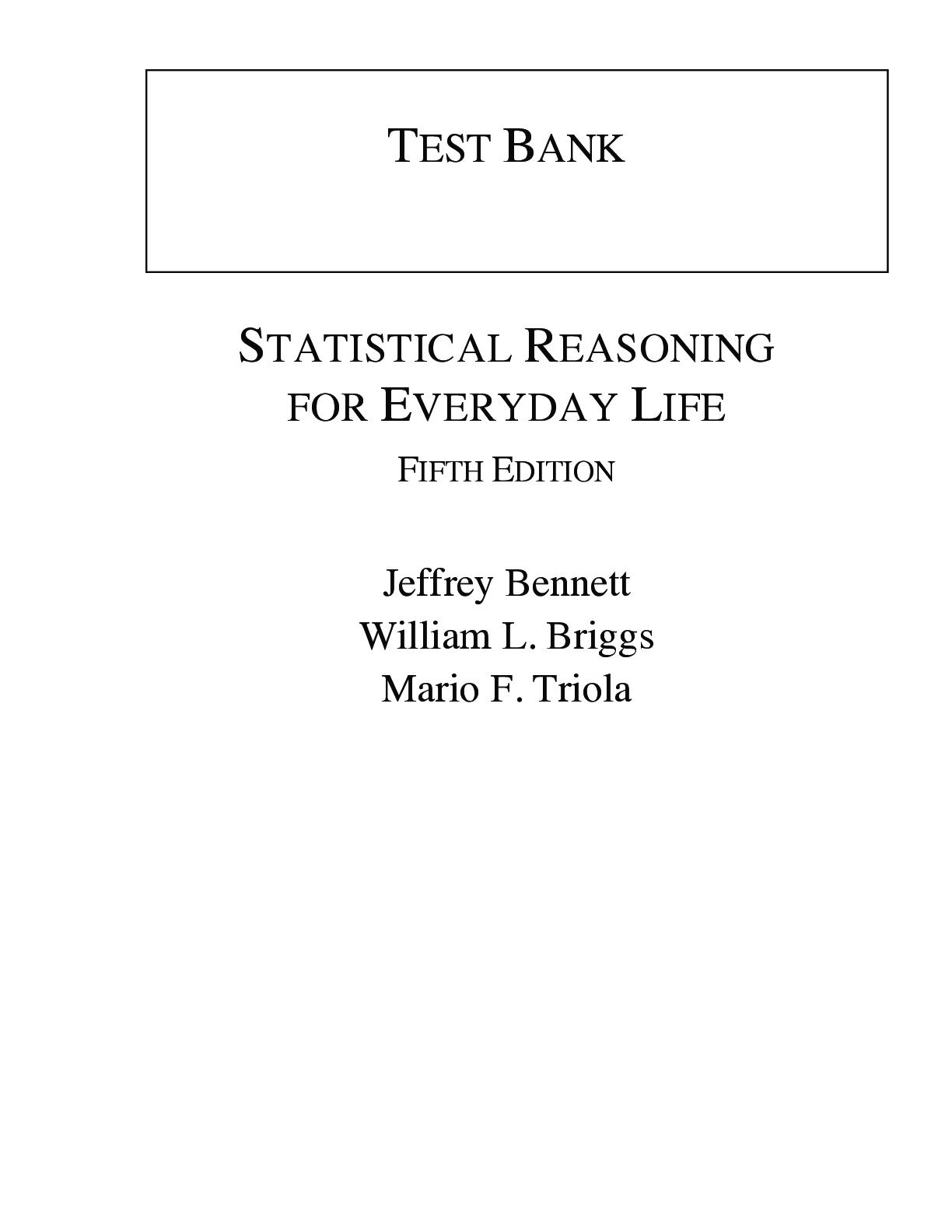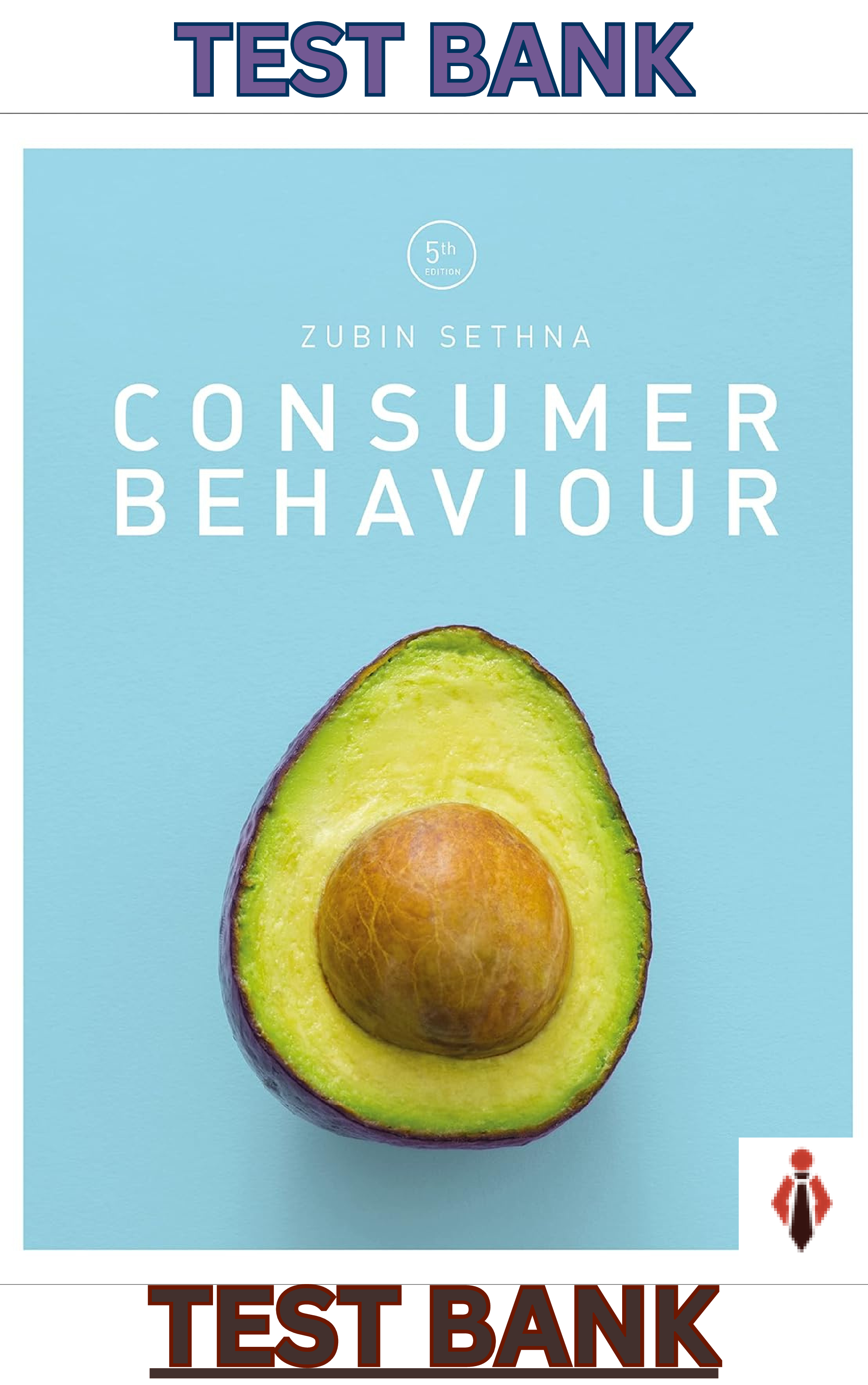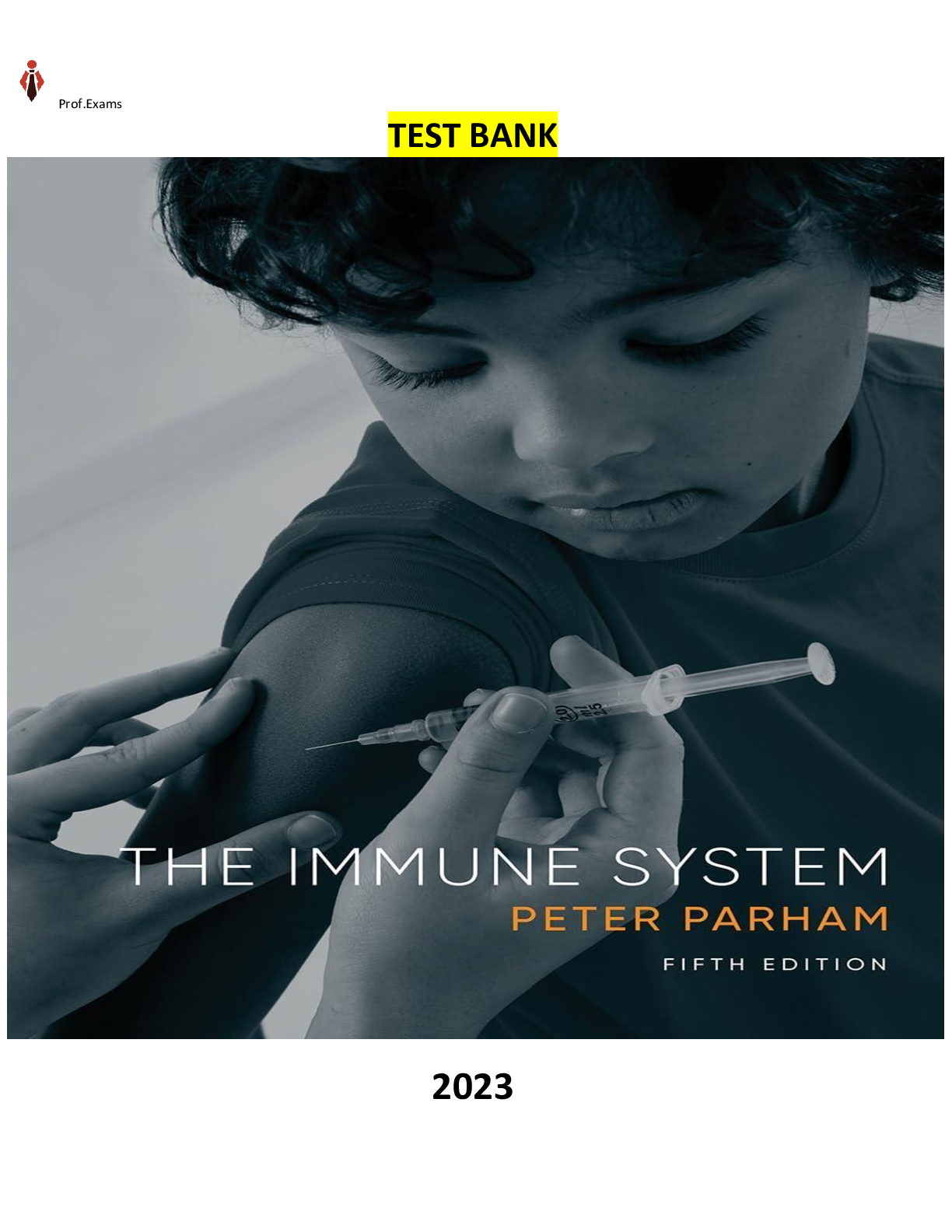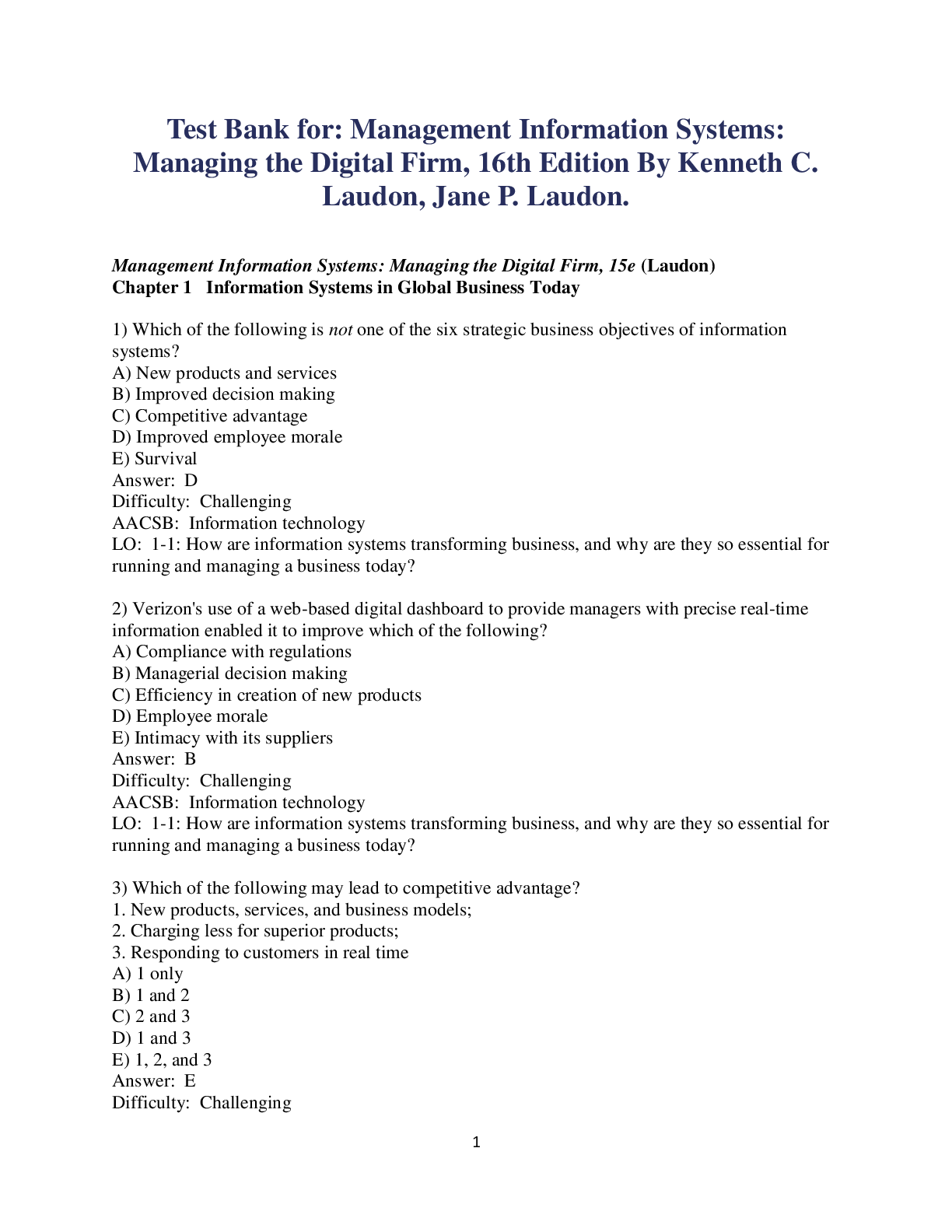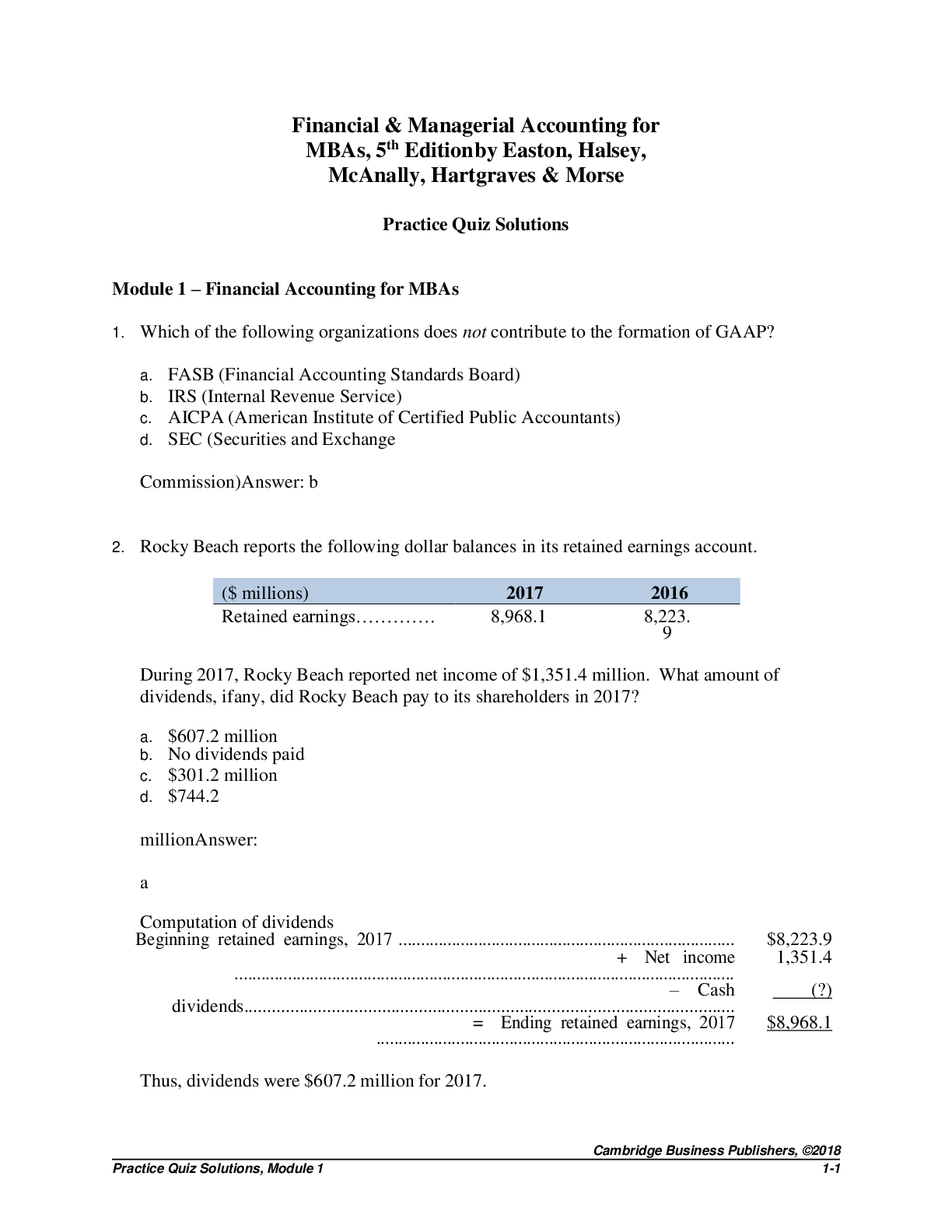Criminology > TEST BANK > Fundamentals of Research in Criminology and Criminal Justice, 5th Edition by Bachman Test Bank (All)
Fundamentals of Research in Criminology and Criminal Justice, 5th Edition by Bachman Test Bank
Document Content and Description Below
Test Bank for Fundamentals of Research in Criminology and Criminal Justice, 5th Edition, 5e by Ronet D. Bachman, Russell K. Schutt TEST BANK ISBN-13: 9781544374055 Full chapters included CHAPTER... 1 • Science, Society, and Research Related to Criminal Justice and Criminology What Do We Have in Mind? → Case Study: Why Do Kids Kill? Reasoning About the Social World Questions and Answers Avoiding Errors in Reasoning How the Scientific Approach Is Different Science Versus Pseudoscience Criminal Justice and Criminological Research in Action Descriptive Research → Case Study: Description—How Prevalent Is Youth Violence? Exploratory Research → Case Study: Exploration—How Did Schools Avert a Shooting Rampage? Explanatory Research → Case Study: Explanation—What Factors Are Related to Youth Delinquency and Violence? Evaluation Research → Case Study: Evaluation—Do Violence Prevention Programs in Schools Work? Alternative Research Orientations → Research in the News: Keeping Count of School Shootings Quantitative and Qualitative Methods Highlighting a Few Specific Types of Research Methods Strengths and Limitations of Social Research → Careers and Research A Comment on Research in a Diverse Society Conclusion Key Terms Highlights Exercises Discussing Research Finding Research on the Web Critiquing Research Making Research Ethical Developing a Research Proposal Performing Data Analysis in SPSS or Excel CHAPTER 2 • The Process and Problems of Research Related to Crime and Criminology What Do We Have in Mind? Identifying a Research Question Where to Start? Refining Research Questions Evaluating Research Questions The Role of Theory Social Research Strategies The Research Circle → Case Study: A History of Investigating the Effects of Arrest for Intimate Partner Violence and the Research Circle → Case Study: Police Decision Making → Research in the News: Number of Reported Rapes Climbs in New York City Research Standards Measurement Validity Generalizability Causal Validity Authenticity → Careers and Research Conclusion Key Terms Highlights Exercises Discussing Research Finding Research on the Web Critiquing Research Making Research Ethical Developing a Research Proposal Performing Data Analysis in SPSS or Excel CHAPTER 3 • Ethical Guidelines for Research What Do We Have in Mind? Would You Pretend to Be a Prisoner? Historical Background → Research in the News: Some Social Scientists Are Tired of Asking for Permission Ethical Principles Achieving Valid Results Honesty and Openness Protecting Research Participants Avoid Harming Research Participants Obtain Informed Consent Avoid Deception in Research, Except in Limited Circumstances Maintain Privacy and Confidentiality Benefits of Research Should Outweigh Risks More on the Institutional Review Board (IRB) Research Involving Special Populations: Children and Prisoners Case Studies: Sexual Solicitation of Adolescents and Milgram Revisited → Careers and Research Conclusion Key Terms Highlights Exercises Discussing Research Finding Research on the Web Critiquing Research Making Research Ethical Developing a Research Proposal Performing Data Analysis in SPSS or Excel CHAPTER 4 • Conceptualization and Measurement What Do We Have in Mind? Concepts Conceptualization in Practice: Defining Youth Gangs From Concepts to Variables: Measurement Operations How Will We Know When We’ve Found It? Using Available Data Constructing Questions Making Observations Collecting Data Through Unobtrusive Measures Combining Measurement Operations → Case Study: Defining Inmate Misconduct How Much Information Do We Really Have? Nominal Level of Measurement Ordinal Level of Measurement Interval Level of Measurement Ratio Level of Measurement The Case of Dichotomies Comparison of Levels of Measurement → Research in the News: Are Teenagers Replacing Drugs With Smartphones? Did We Measure What We Wanted to Measure? Measurement Validity Measurement Reliability Can We Achieve Both Reliability and Validity? → Careers and Research A Comment on Measurement in a Diverse Society Conclusion Key Terms Highlights Exercises Discussing Research Finding Research on the Web Critiquing Research Making Research Ethical Developing a Research Proposal Performing Data Analysis in SPSS or Excel CHAPTER 5 • Sampling What Do We Have in Mind? Sample Planning Define Sample Components and the Population Evaluate Generalizability Assess Population Diversity Consider a Census Sampling Methods Probability Sampling Methods Nonprobability Sampling Methods Lessons About Sample Quality Generalizability in Qualitative Research Units of Analysis and Errors in Causal Reasoning → Research in the News: What Are Best Practices for Sampling Vulnerable Populations? Individual and Group Units of Analysis The Ecological Fallacy and Reductionism → Careers and Research Conclusion Key Terms Highlights Exercises Discussing Research Finding Research on the Web Critiquing Research Making Research Ethical Developing a Research Proposal Performing Data Analysis in SPSS or Excel CHAPTER 6 • Causation and Experimentation What Do We Mean by Causation? Causal Explanations Quantitative (Nomothetic) Causal Explanation Qualitative (Idiographic) Causal Explanation Criteria for Nomothetic Causal Explanations → Case Study: Media Violence and Violent Behavior Association Time Order Nonspuriousness Mechanism Context Why Experiment? True Experiments → Case Study: An Experiment in Action: Prison Classification and Inmate Behavior → Case Study: Field Experiments in Action: Determining the Effect of Incarceration on Employment What If a True Experiment Isn’t Possible? Nonequivalent Control Group Designs → Case Study: Parole Community Resource Centers and Recidivism Before-and-After Designs → Case Study: The Effects of the Youth Criminal Justice Act Ex Post Facto Control Group Designs → Case Study: Does an Arrest Increase Delinquency? What Are the Threats to Internal Validity and Generalizability in Experiments? Causal (Internal) Validity Interaction of Testing and Treatment Generalizability The Element of Time in Research → Case Study: Cross-Sectional Research Using Life Calendars—Do Offenders Specialize in Different Crimes? → Research in the News: Do Video Games Lead to Mass Shootings? Repeated Cross-Sectional Designs Fixed-Sample Panel Designs Event-Based Designs Causality in Nonexperimental Designs How Do Experimenters Protect Their Subjects? Deception Selective Distribution of Benefits → Careers and Research Conclusion Key Terms Highlights Exercises Discussing Research Finding Research on the Web Critiquing Research Making Research Ethical Developing a Research Proposal Performing Data Analysis in SPSS or Excel CHAPTER 7 • Survey Research Survey Research in Action: Measuring Victimization What Is a Survey? Attractive Features of Survey Research The Omnibus Survey Questionnaire Development and Assessment Maintain Focus Build on Existing Instruments Consider Translation → Case Study: Measuring Violent Victimizations Writing Survey Questions: More Difficult Than You Think! Constructing Clear and Meaningful Questions Additional Guidelines for Closed-Ended Questions Combining Questions Into an Index Don’t Forget to Pretest! Organization Matters → Research in the News: United Nations Report Highlights Violence Against Women in Families Survey Designs Mailed (Self-Administered) Surveys Group-Administered Surveys Surveys by Telephone In-Person Interviews Electronic Surveys Mixed-Mode Surveys A Comparison of Survey Designs Ethical Issues in Survey Research Protection of Respondents Confidentiality → Careers and Research Conclusion Key Terms Highlights Exercises Discussing Research Finding Research on the Web Critiquing Research Making Research Ethical Developing a Research Proposal Performing Data Analysis in SPSS or Excel CHAPTER 8 • Qualitative Methods and Data Analysis What Do We Mean by Qualitative Methods? Fundamentals of Qualitative Methods Origins of Qualitative Research → Case Study: Life in a Gang Participant Observation Choosing a Role → Case Study: The “Researcher as a Hooligan” Entering the Field Developing and Maintaining Relationships Sampling People and Events Taking Notes Managing the Personal Dimensions Systematic Observation → Case Study: Systematic Observation in Chicago Neighborhoods Intensive Interviewing Establishing and Maintaining a Partnership Asking Questions and Recording Answers → Case Study: Barriers to Reentry for Older Offenders Combining Participant Observation and Intensive Interviewing Focus Groups → Case Study: An Analysis of Police Searches Analyzing Qualitative Data Qualitative Data Analysis as an Art Qualitative Compared With Quantitative Data Analysis Techniques of Qualitative Data Analysis Documentation Making Sense of It: Conceptualization, Coding, and Categorizing Examining Relationships and Displaying Data Corroboration and Authenticating Conclusions Reflexivity Alternatives in Qualitative Data Analysis Grounded Theory Computer-Assisted Qualitative Data Analysis → Case Study: Narratives of Desistance From Crime and Substance Abuse Ethical Issues in Qualitative Research Voluntary Participation Subject Well-Being Identity Disclosure Confidentiality Appropriate Boundaries Researcher Safety → Research in the News: Reporters Engage in Observation in Honduran Gang Territory Who Owns the Qualitative Data? → Careers and Research Conclusion Key Terms Highlights Exercises Discussing Research Finding Research on the Web Critiquing Research Making Research Ethical Developing a Research Proposal Performing Data Analysis in SPSS or Excel CHAPTER 9 • Analyzing Content and Police Data: Social-Network Analysis, Crime Mapping, Big Data, and Content Analysis What Do We Have in Mind? Analyzing Secondary Data Social-Network Analysis → Case Study: Networks of Terrorist Cells → Case Study: Finding a Serial Killer Crime Mapping → Case Study: Predicting Break and Entries (BNEs) Big Data → Research in the News: Predictive Policing in Los Angeles → Case Study: Predicting Where Crime Will Occur → Case Study: Predicting Recidivism With Big Data Ethical Issues in Using Big Data Content Analysis Identifying a Population of Documents or Other Textual Sources Determine the Units of Analysis Developing Reliable and Valid Coding Procedures Is Not an Easy Task Base Statistical Analyses on Counting Occurrences of Particular Items → Case Study: Media Portrayals of Abducted Children Methodological Issues When Using Secondary Data Ethical Issues When Analyzing Available Data and Content → Careers and Research Conclusion Key Terms Highlights Exercises Discussing Research Finding Research on the Web Critiquing Research Making Research Ethical Developing a Research Proposal Performing Data Analysis in SPSS or Excel CHAPTER 10 • Evaluation and Policy Analysis What Do We Have in Mind? A Brief History of Evaluation Research Evaluation Basics Questions for Evaluation Research Do We Need the Program? Can the Program Be Evaluated? Is the Program Working as Planned? → Case Study: Process Evaluation of an Antigang Initiative Did the Program Work? → Case Study: The Risk Skills Training Program (RSTP) Compared With Drug Abuse Resistance Education-Abbreviated (DARE-A) Is the Program Worth It? → Case Study: Cost–Benefit Analysis of CCTV Monitoring and Direct Police Patrol Design Decisions Black-Box Evaluation or Program Theory Researcher or Stakeholder Orientation Evaluation in Action → Case Study: Problem-Oriented Policing in Violent Crime Areas—A Randomized Controlled Experiment Strengths of Randomized Experimental Designs in Impact Evaluations → Research in the News: Many U.S. Jails Fail to Stop Inmate Suicides When Experiments Are Not Feasible → Case Study: Nonequivalent Control Group Design: Decreasing Injuries From Police Use of Force Qualitative and Quantitative Methods Increasing Demand for Evidence-Based Policy Ethics in Evaluation → Careers and Research Conclusion Key Terms Highlights Exercises Discussing Research Finding Research on the Web Critiquing Research Making Research Ethical Developing a Research Proposal Performing Data Analysis in SPSS or Excel CHAPTER 11 • Mixing and Comparing Methods What Do We Have in Mind? What Are Mixed Methods? Should Methods Be Mixed? Types of Mixed-Methods Designs → Case Study: Convergent Parallel Design: School Security and Discipline → Case Study: Exploratory Sequential Design: American Indian Homicide → Case Study: Embedded Design: Investigating Rape Strengths and Limitations of Mixed Methods → Research in the News: Lacking Data on Gun Violence Comparing Results Across Studies Meta-Analysis → Case Study: Meta-Analysis: The Effectiveness of Antibullying Programs Meta-Synthesis → Case Study: Meta-Synthesis: Female Drug Dealers Ethics and Mixed Methods → Careers and Research Conclusion Key Terms Highlights Exercises Discussing Research Finding Research on the Web Critiquing Research Making Research Ethical Developing a Research Proposal Performing Data Analysis in SPSS or Excel CHAPTER 12 • Summarizing and Reporting Research What Do We Have in Mind? Research Report Goals Advance Scientific Knowledge Shape Social Policy Organize Social Action—Participatory Action Research → Case Study: Seeking Higher Education for Inmates Dialogue With Research Subjects Types of Research Reports Student Papers and Theses Journal Articles Applied Reports Curbing the Frustrations of Writing Displaying Data Special Considerations for Reporting Quantitative and Qualitative Research → Research in the News: Criminalizing Fraud Related to the OxyContin Crisis Ethics, Politics, and Reporting Research Communicating With the Public Plagiarism → Careers and Research Conclusion Key Terms Highlights Exercises [Show More]
Last updated: 11 months ago
Preview 1 out of 312 pages
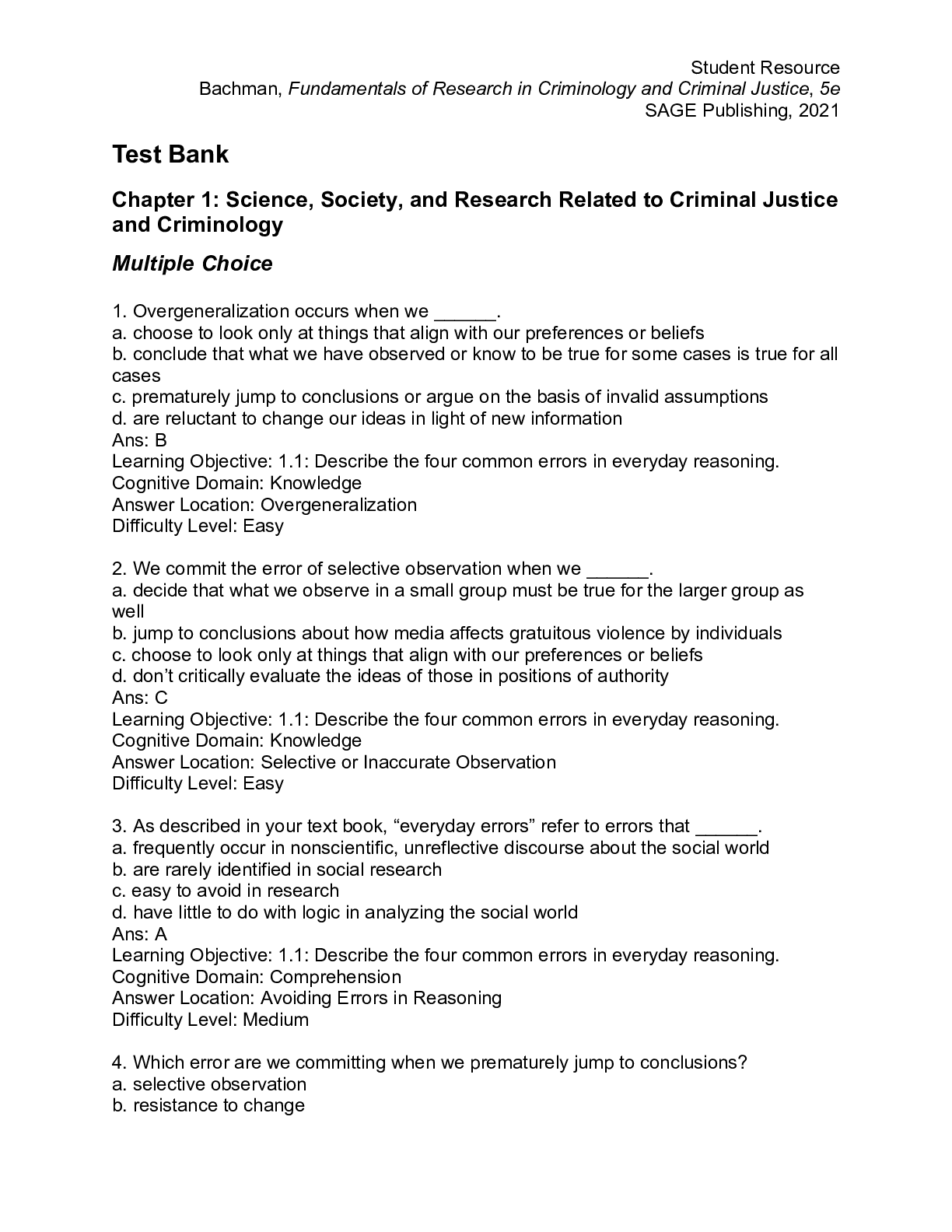
Reviews( 0 )
Document information
Connected school, study & course
About the document
Uploaded On
Sep 01, 2022
Number of pages
312
Written in
Additional information
This document has been written for:
Uploaded
Sep 01, 2022
Downloads
0
Views
50

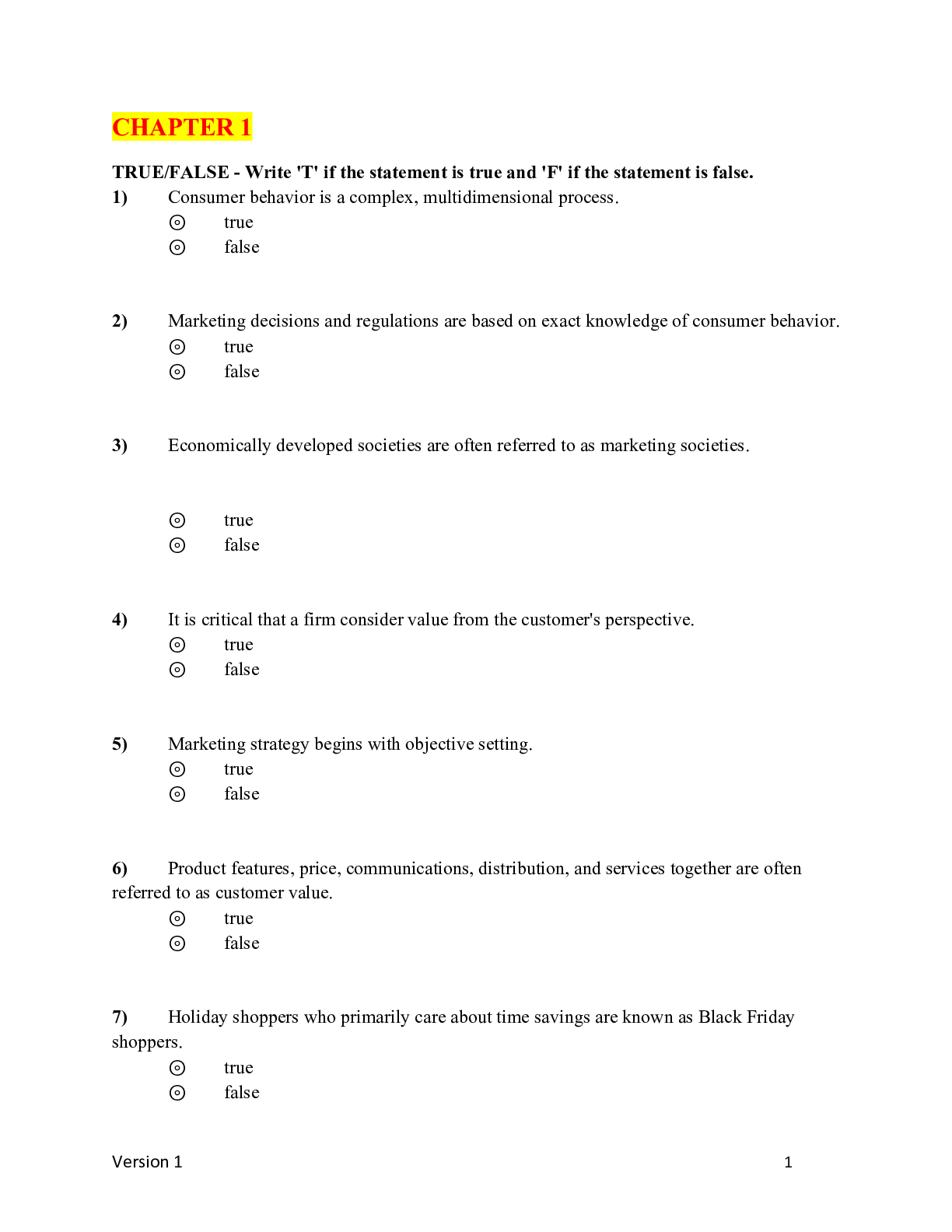
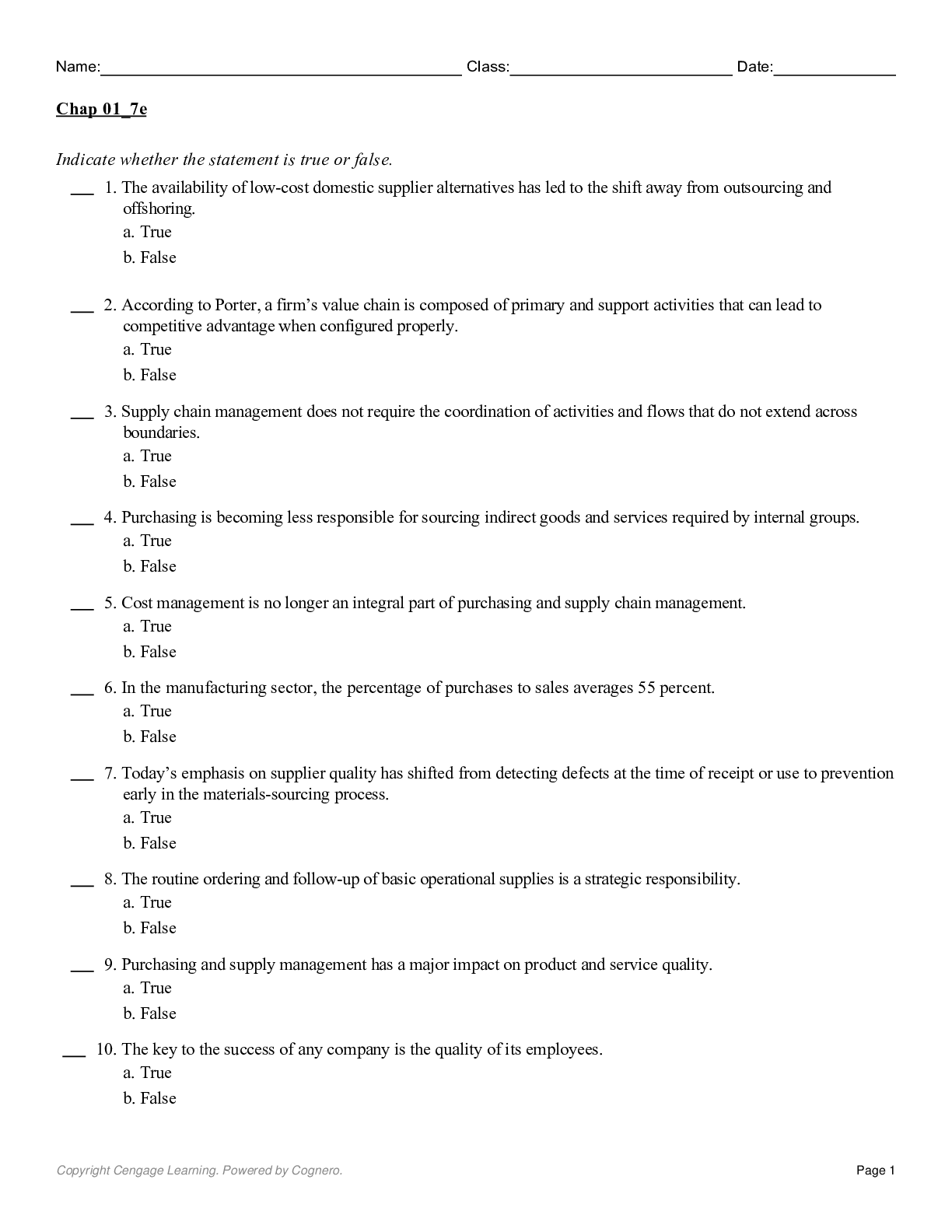
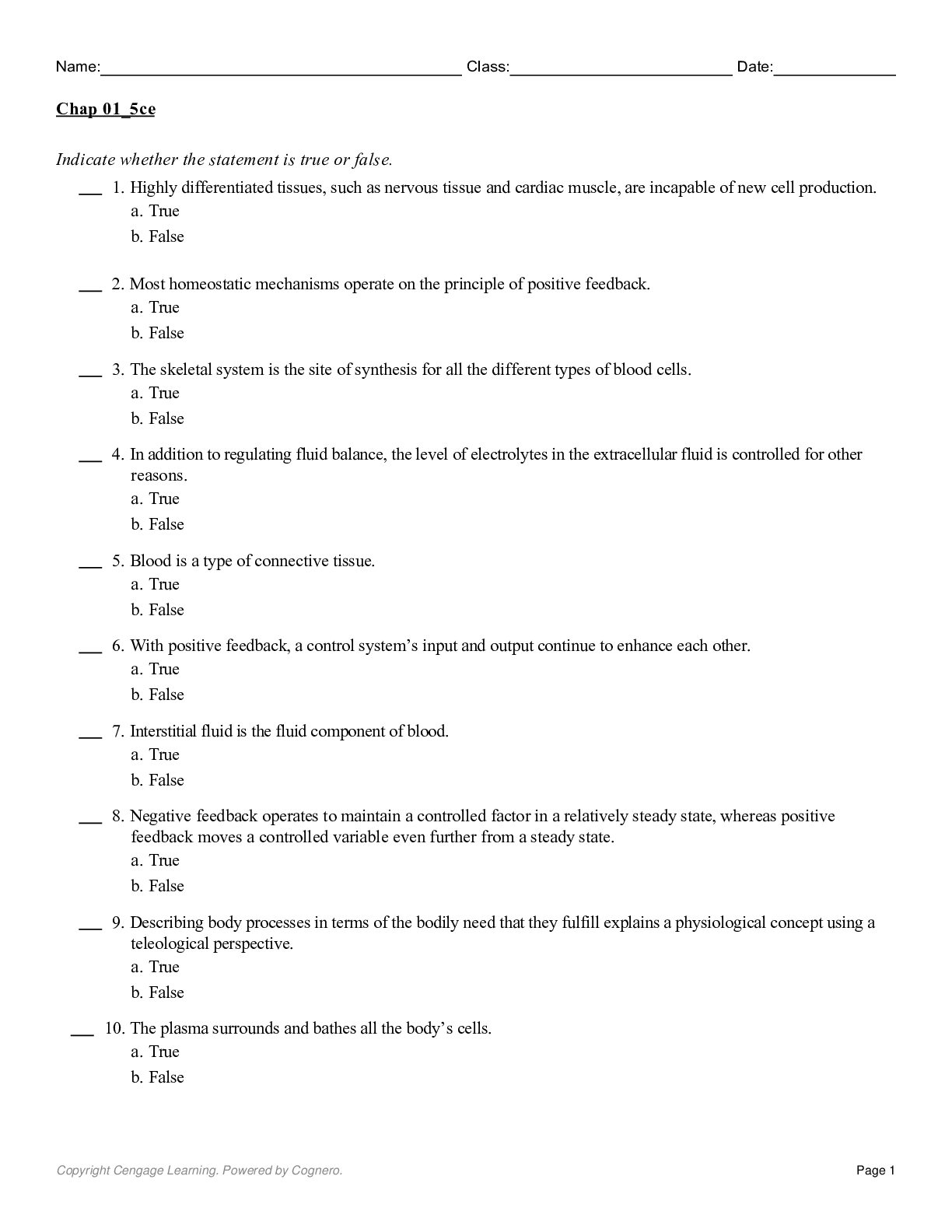






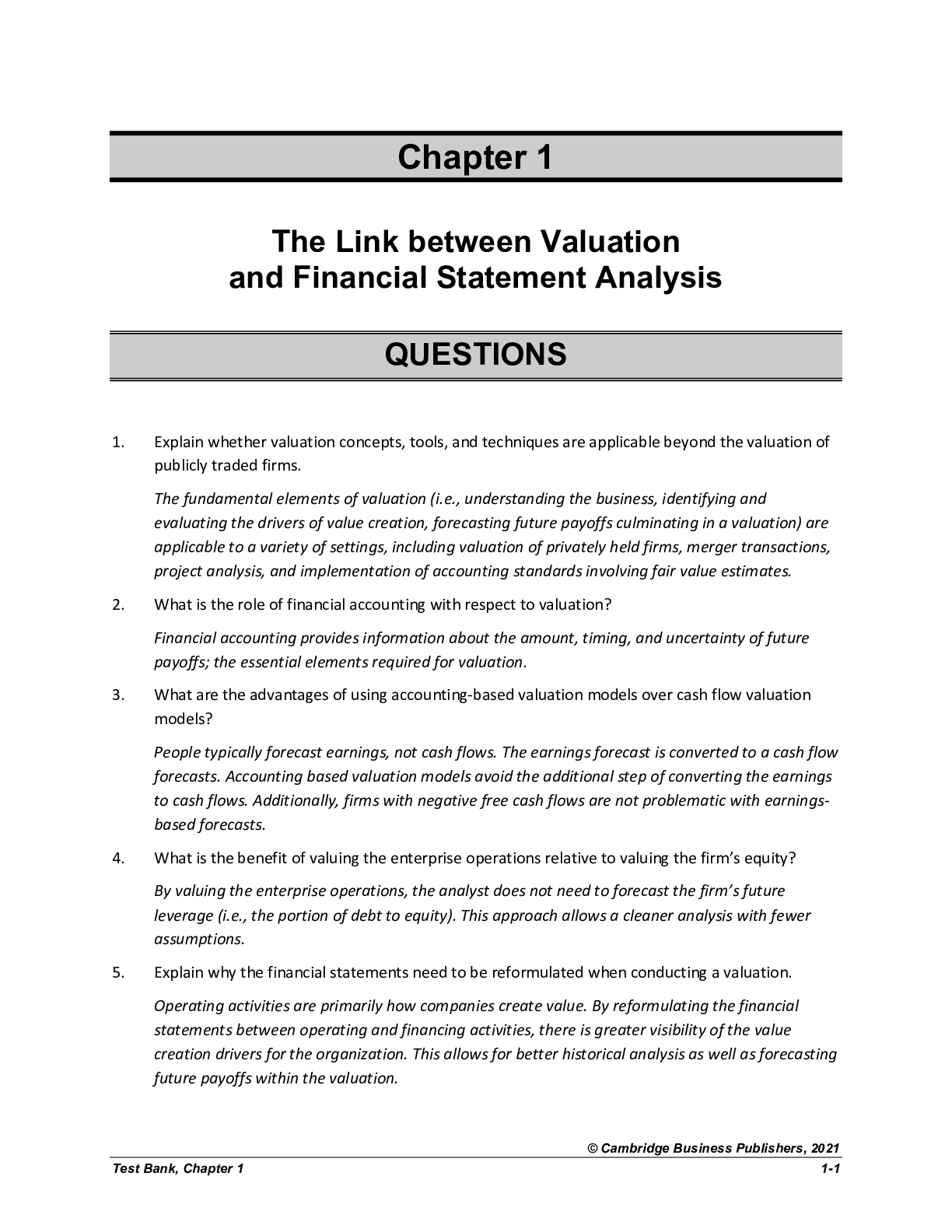




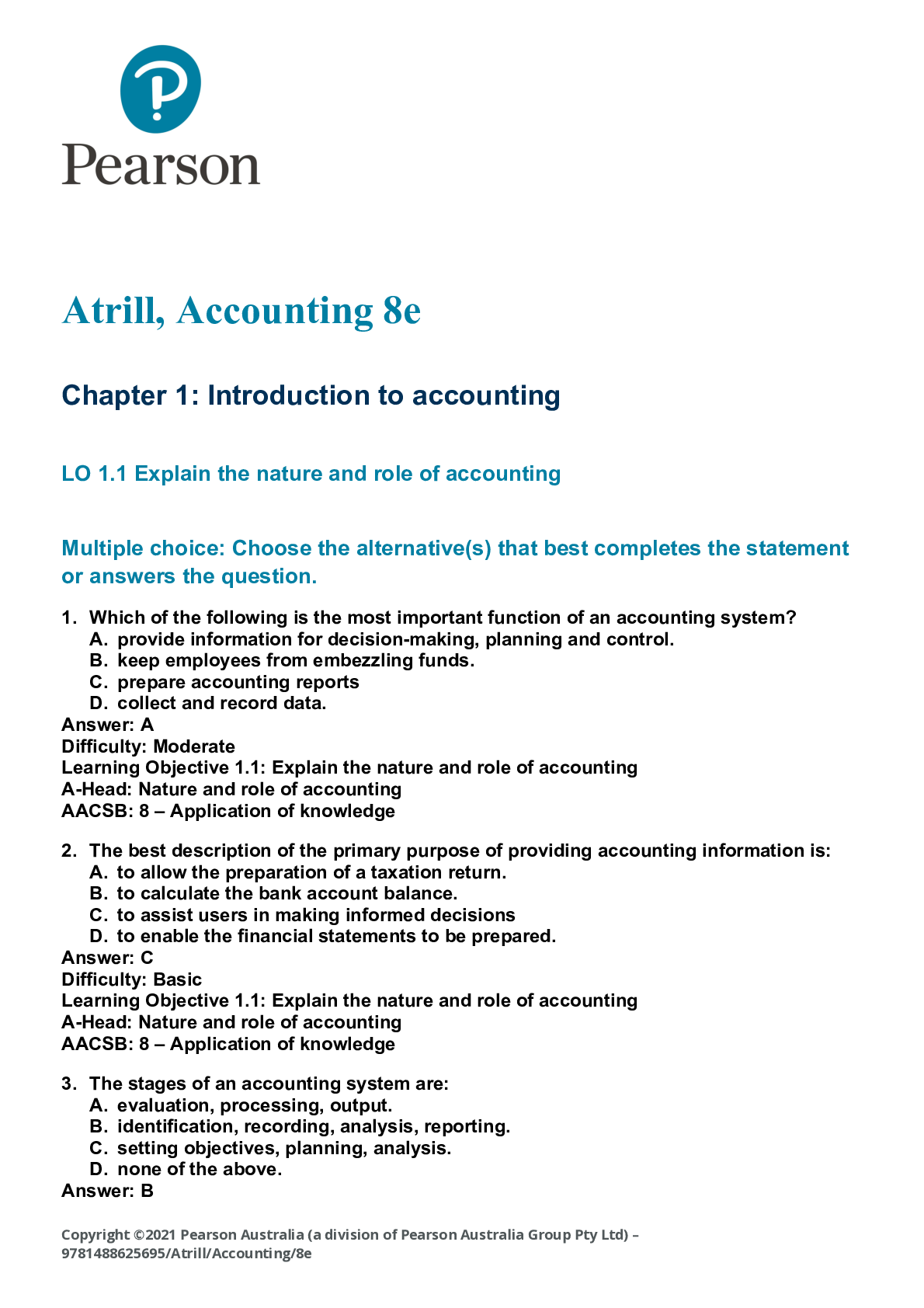
.png)

